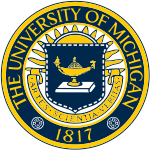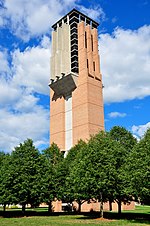Michigan Islamic Academy
1985 establishments in MichiganEducation in Ann Arbor, MichiganEducational institutions established in 1985High schools in Ann Arbor, MichiganIslam stubs ... and 3 more
Islamic schools in MichiganMichigan school stubsPrivate K–12 schools in Michigan
Michigan Islamic Academy (MIA) is a Kindergarten through grade 12 Islamic private day school in Ann Arbor, Michigan. The school was opened in 1985.As of 2015 it had 213 students. 75 of them lived in Ann Arbor, 52 lived in Ypsilanti, 35 in Canton, 20 in the Dearborn area, four each in Jackson and Westland, three each in Dexter, Farmington, and South Lyon, two each in Plymouth and Superior Township (Washtenaw County), and one each in Brighton, Harper Woods, Northville, Saline, Southfield, and Whitmore.
Excerpt from the Wikipedia article Michigan Islamic Academy (License: CC BY-SA 3.0, Authors).Michigan Islamic Academy
Plymouth Road, Ann Arbor
Geographical coordinates (GPS) Address Phone number Website Nearby Places Show on map
Geographical coordinates (GPS)
| Latitude | Longitude |
|---|---|
| N 42.301305555556 ° | E -83.714638888889 ° |
Address
Muslim Community Association
Plymouth Road 2301
48105 Ann Arbor
Michigan, United States
Open on Google Maps








